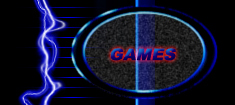







Landslide
Logan Everett (E-mail Me)
Landslide - A Special Report
What went wrong?
I think the most notable flaw in Landslide is the controls. I'll
be the first to admit that it's unpleasantly choppy. The main problem
here is that I'm using Visual Basic, which is a "high-level" programming
language. Simply put, this means that it is harder to work directly
with the hardware (such as the keyboard). However, improving this
is going to take a lot of time, and I had already delayed the game
because of school work. So, I took the bull by the horns and put
the game out anyway.
Another problem was lack of testing. There are a few unprofessional glitches in there that would have been easily caught if I'd taken the extra time to pass the game on to a few beta testers. If anyone wants to be a beta tester please E-mail me. An example of this is the line counter. If you start a new game after getting a game over, the score and speed counters drop immediately back to 0, but the line counter doesn't change until you create another line.
Originally the startup screen was supposed to feature falling pieces, but the screenshots kept coming out off color and the pieces were too small. In the end, I had a startup screen that really had nothing to do with the game graphical wise, but it looks awesome anyway because Cory has such "mad skillz".
Ultimately, time was the big problem with this project. It went smoothly when I started in the summer of '99 but once I went back to school I just didn't have the necessary time. There is definitely room for improvement on this game, and I may very well improve it, but I wanted to put out a finished project to lighten my load.
What went right?
One thing I'm definitely proud of with this game is my original
Block-Grip system, which worked very well. This system was implemented
to create each piece. It works as follows:
- All pieces must use 4 blocks.
- One of these blocks is the "grip" block. Picture this as the block that you are holding the piece by when you move it.
- The other three blocks are each stored as a set of 2 numbers (X and Y). The X and Y value for each piece represent how many spaces away from the grip that block is (this is called the offset). There are 4 sets of these data for each piece (one for each rotation). All together that is 24 integers for each piece.
- Then, when the piece is placed in the actual game it can be easily controlled from the grip and the positions of the other three blocks can be calculated by adding the grip position to the offset positions.
The music and sound effects came out excellent. Now I know that I can rely on the talent of others on the Internet for such resources. Fredrik Sand is the man! (He's the composer of the music heard in the background).
Overall I am happy with this game. It is identifiable as a Tetris-clone, and that was the point. I made this game as practice and I wasn't really looking to innovate on the design. This game is for everyone who can't find their old Gameboy and just wants some good old-fashioned fun.
Now Read the Review at ZDNet!Page Updated: 3/10/00
